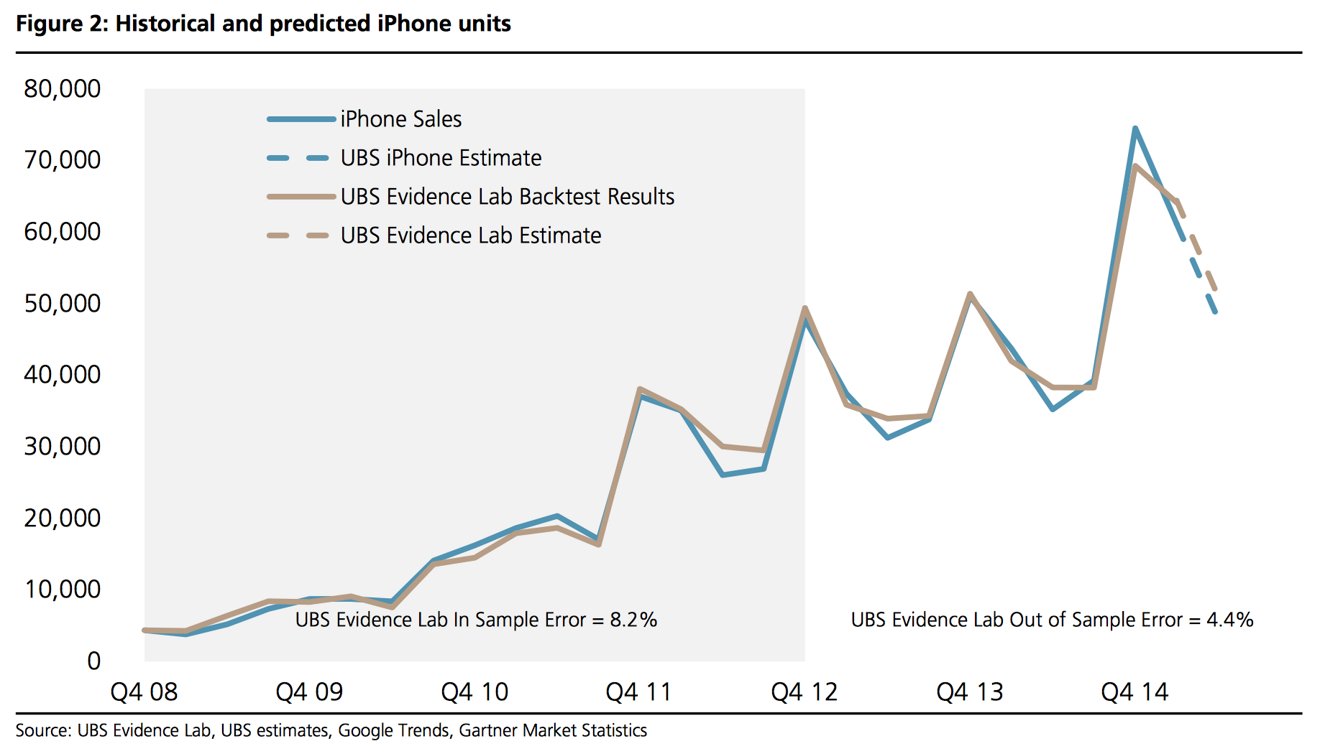Apple on track for another 51+ million iPhone sales this quarter, research says
Demand for Apple's iPhone continues to stay extremely strong, even as the life cycle of the current iPhone 6 series begins to wind down heading into the fall, new data from UBS reveals.
The latest results from the UBS Evidence Lab iPhone Monitor shows consumer demand for the iPhone at 51.1 million units for the June quarter. The estimates were revealed in a research note issued to investors on Thursday, a copy of which was provided to AppleInsider.
Whether or not Apple will actually manufacture that many units to meet demand is unknown, but the new data did compel analyst Steven Milunovich to raise his sales estimate for June quarter from 43 million iPhones to 48 million units.
If Apple can break the 50 million iPhone sales barrier again in the June quarter, it will mark three straight quarters achieving that milestone.
UBS's research found continued strength for the iPhone in China, where Apple has seen considerable growth. By tracking search queries, the data shows 23 percent year over year growth for Apple's handset globally, while China has seen a 100 percent increase from the same period last year.
To put the projections in perspective, in the same June quarter a year ago, Apple sold 35.2 million iPhones, a number that at the time was seen as something of a disappointment on Wall Street. That represented a 12.7 percent increase from the 31.2 million the company shipped in the June 2013 quarter.
Apple has only topped 50 million iPhone sales in a single quarter three times: First in the fall of 2013, again a year later, and then again in the following quarter which concluded in April.
If Apple were to exceed 50 million iPhone sales in the current June quarter, it would keep alive a streak of three straight quarters with sales above that mark.
UBS's Evidence Lab iPhone Monitor uses search results from over 20 countries, weighted by respective country data from Gartner Market Statistics, to create a Google global search value. Further adjustments are made for quarterly variances and seasonal effects, built on a sample period ranging from 2008 to 2012.
 Neil Hughes
Neil Hughes











 William Gallagher
William Gallagher
 Malcolm Owen
Malcolm Owen
 Sponsored Content
Sponsored Content



 Christine McKee
Christine McKee







